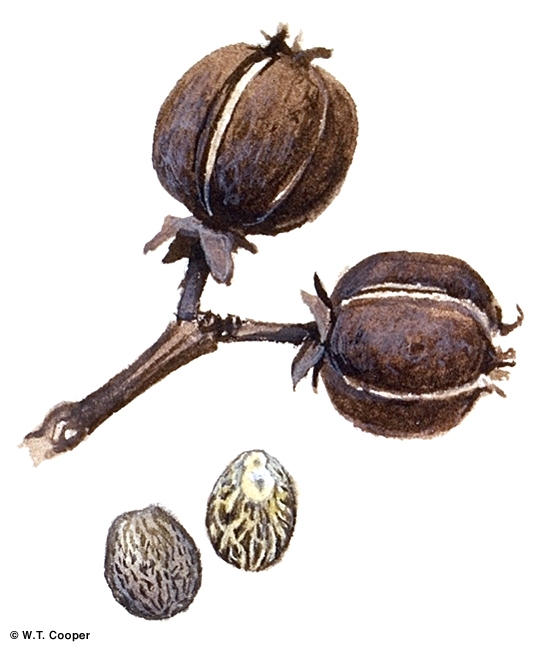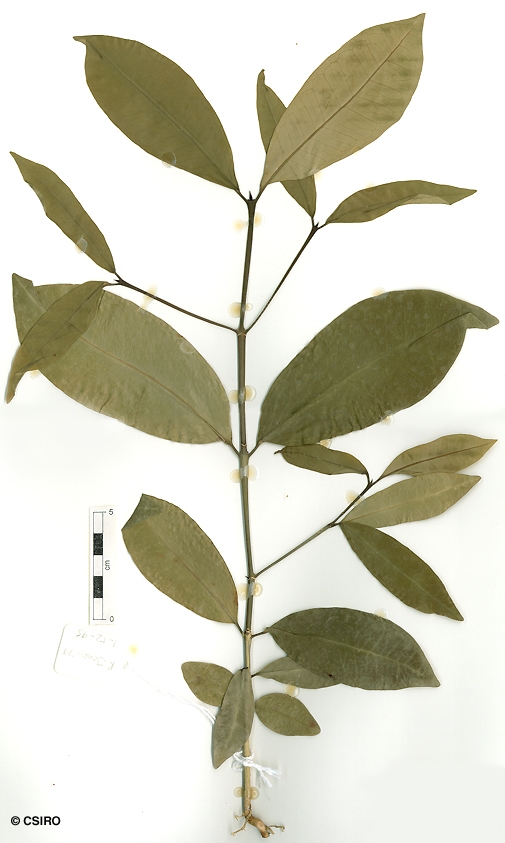Australian Tropical Rainforest Plants - Online edition
Baloghia inophylla (G.Forst.) P.S.Green
Click/tap on images to enlarge

Female flowers [not vouchered]. © G. Sankowsky

Leaves and male flowers. © Australian Plant Image Index (APII). Photographer: M. Fagg.

Fruit [not vouchered]. © G. Sankowsky

Fruit, side view and seeds. © W. T. Cooper

Scale bar 10mm. © CSIRO

Cotyledon stage, Epigeal germination. © CSIRO

10th leaf stage. © CSIRO
Family
Green, P.S. (1986) Kew Bulletin 41(3): 1026.
Common name
Birch, Ivory; Brush Bloodwood; Ivory Birch; Scrub Bloodwood
Stem
Leaves
Seedlings
Cotyledons elliptic, about 35-40 x 15-22 mm. Cataphylls produced between the cotyledons and the first pair of true leaves. At the tenth leaf stage: leaf blade elliptic, apex bluntly acuminate; stem encircled by conspicuous scars resembling stipular scars. Glands visible on the edge of the leaf blade close to its junction with the petiole. Seed germination time 20 to 59 days.
Distribution and Ecology
Occurs in CYP, NEQ, CEQ and southwards as far as south eastern New South Wales. Altitudinal range in NEQ from 400-900 m. Grows in drier rain forest often associated with Kauri Pine (Agathis robusta). Also occurs in New Caledonia and Norfolk and Lord Howe Islands.
Synonyms
Croton inophyllus Forst. f., Prodr. : 67(1786), Type: New Caledonia, lecto: K; iso: BM, GOET. Fide Green , Kew Bull. 41: 1026 (1986). Baloghia lucida Endl., Prodromus Florae Norfolkicae : 84(1833), Type: Norfolk Island Bauer, Holo: W. Codiaeum lucidum (Endl.) Mull.Arg., Prodromus 15(2.: 1116(1866).
RFK Code
389
Copyright © CSIRO 2020, all rights reserved.

Web edition hosted at https://apps.lucidcentral.org/rainforest




